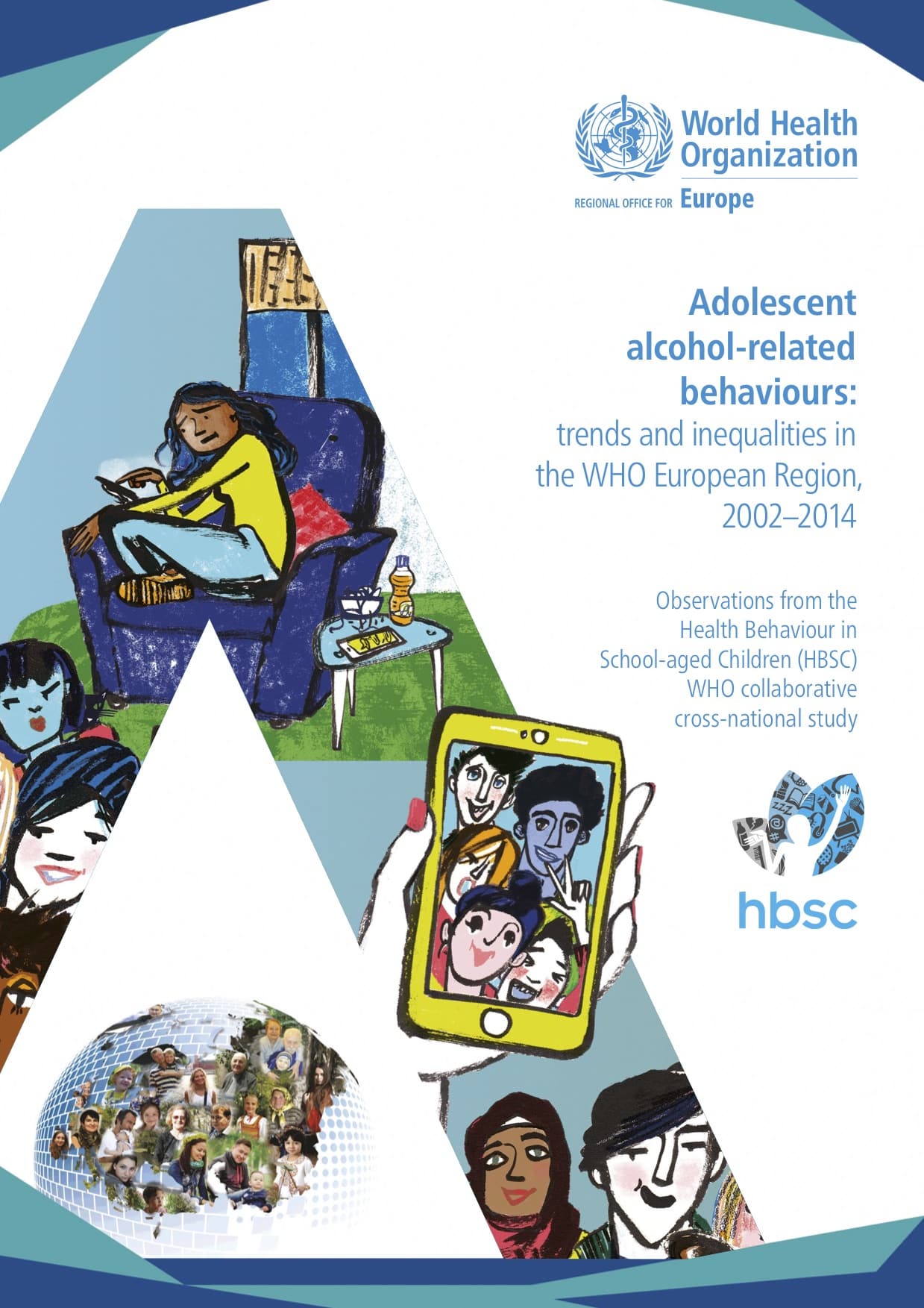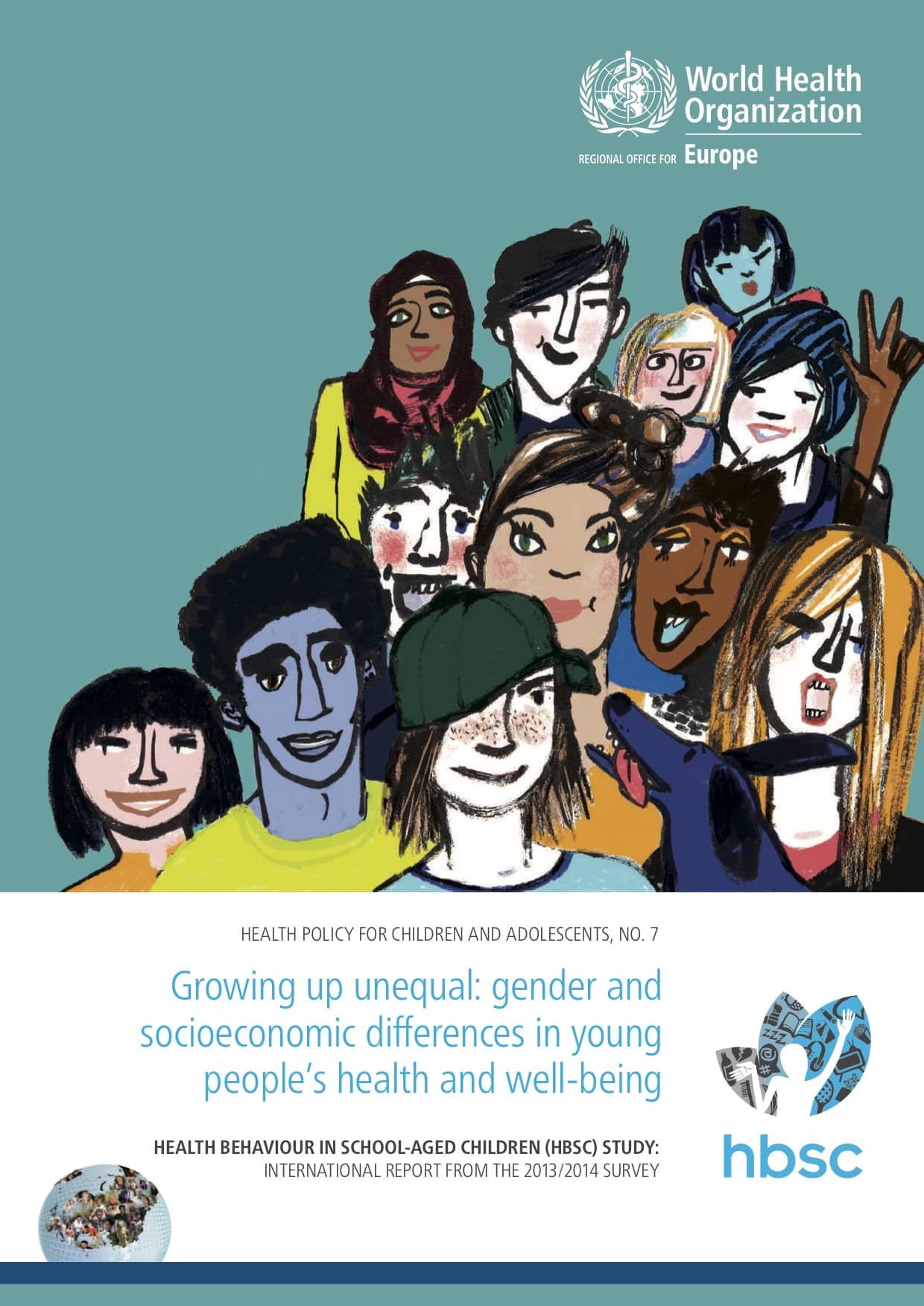HOME » PUBLICATIONS » REPORTS
Adolescent obesity and related behaviours: trends and inequalities in the WHO European Region, 2002–2014
Observations from the Health Behaviour in School-aged Children (HBSC) WHO collaborative cross-national study

Abstract: The report Adolescent obesity and related behaviours: trends and inequalities in the WHO European Region, 2002–2014 presents the latest trends in obesity, eating behaviours, physical activity and sedentary behaviour from the Health Behaviour in School-Aged Children (HBSC) study, and highlights gender and socioeconomic inequalities across the WHO European Region.
Trends have previously been reported separately, but this report brings together for the first time HBSC data on obesity and obesity-related behaviours to review the latest evidence and consider the range and complexity of factors influencing childhood obesity.
HBSC data: 2001/02, 2005/06, 2009/10 and 2013/14 surveys
Topic: Obesity and eating behaviours
ISBN: 978 92 890 5240 5
Copyright: CC BY-NC-ND 3.0
Editors: Jo Inchley, Dorothy Currie, Jo Jewell, João Breda & Vivian Barnekow
Suggested citation: Inchley J et al. eds. Adolescent obesity and related behaviours: trends and inequalities in the WHO European Region, 2002–2014. Observations from the Health Behaviour in School-aged Children (HBSC) WHO collaborative cross-national study. Copenhagen, WHO Regional Office for Europe, 2017.
From x (twitter)
Download our new report on European trends in adolescent obesity + related health behaviours: https://t.co/NKGcsdkATr. Published today 🎉 pic.twitter.com/gw3bjnwrXD
— HBSC Study (@HBSCStudy) May 17, 2017
Need to prioritize policies that improve young people’s access to healthy foods + improve built environments to encourage physical activity pic.twitter.com/iCQyIVzsdU
— HBSC Study (@HBSCStudy) May 17, 2017
New HSBC study report shows 27% of adolescent obesity in Europe in 2014 was attributed to socioeconomic differences, up from 18% in 2002 pic.twitter.com/Yf0TL7wGt1
— HBSC Study (@HBSCStudy) May 17, 2017
Young people spend approximately 60% of their waking time sitting. Read the new report at https://t.co/RXJTiUHCDF #teenhealth #obesity pic.twitter.com/zFxgpAAkqS
— HBSC Study (@HBSCStudy) May 20, 2017
Related reports
SPOTLIGHT ON ADOLESCENT HEALTH AND WELL-BEING
FINDINGS FROM THE 2017/18 HEALTH BEHAVIOUR IN SCHOOL-AGED CHILDREN (HBSC) SURVEY IN EUROPE AND CANADA
ADOLESCENT ALCOHOL-RELATED BEHAVIOURS: TRENDS AND INEQUALITIES IN THE WHO EUROPEAN REGION, 2002–2014
OBSERVATIONS FROM THE HEALTH BEHAVIOUR IN SCHOOL-AGED CHILDREN (HBSC) WHO COLLABORATIVE CROSS-NATIONAL STUDY
GROWING UP UNEQUAL: GENDER AND SOCIOECONOMIC DIFFERENCES IN YOUNG PEOPLE’S HEALTH AND WELL-BEING
HEALTH BEHAVIOUR IN SCHOOL-AGED CHILDREN (HBSC) STUDY: INTERNATIONAL REPORT FROM THE 2013/14 SURVEY


